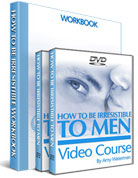As those of you who've been following my blog know, one of my newest favorite authors is Thich Nhat Hanh, a Buddist monk who practices mindfulness at Plum Village, a retreat in France.
I was recently given a copy of his No Death, No Fear: Comforting Wisdom for Life (Riverhead Books, NY: 2002), a beautiful little book that teaches us to overcome our fears of death and dying by teaching us that all endings and beginnings are just illusions. Just as we know that matter cannot be created or destroyed, just transformed into energy, so we can look more deeply into the nature of existence and realize that we can't go from being something to being nothing. We can't be here one day and gone the next.
For Thich Nhat Hanh, death is not an ending: it's merely a transformation. On a material level, we can see that our bodies will decompose and become soil that will eventually support the growing of living things. On a spiritual level, we can see that we're never really gone, as we are reborn daily in our children, who share our genes, and in all those people we touched while we lived our lives.
It is this last point that struck me most poignantly. Thich Nhat Hanh encourages us to see our existence horizontally rather than vertically. Instead of seeing the ego – the "I" – that exists from birth until death, we should seek our real selves in the myriad influences we have on every living being that co-exists with us. Just as a butterfly's flight can cause a storm on the other side of the world, so our most insignificant actions and words can have an enormous effect on the world we live in. Yet most of the time, we aren't even aware of the impact of our lives. Remember that beautiful holiday movie, It's a Wonderful Life? (If you don't remember, here's a brilliantly funny sketch of that movie enacted by bunnies.)
Today, I'd like to share with you the metaphor that Thich Nhat Hanh uses to describe where we should find ourselves: not in our material bodies, but in the essence of ourselves that we share with others.
"When I make a pot of oolong tea, I put tea leaves into the pot and pour boiling water on them. Five minutes later there is tea to drink. When I drink it, oolong tea is going into me. If I put in more hot water, making a second pot of tea, the tea from those leaves continues to go into me. After I have poured out all the tea, what will be left in the pot is just the spent tea leaves. The leaves that remain are only a very small part of the tea. The tea that goes into me is a much bigger part of the tea. It is the richest part.
"We are the same; our essence has gone into our children, our friends and the entire universe. We have to find ourselves in those directions and not in the spent tea leaves." (No Death, No Fear p.125)
When you think about your life, think about the essence that you are sharing with others. Don't preoccupy yourself with the body that may not be as attractive or thin as you may wish. It is your essence that men (and others) will fall in love with, and that will penetrate so deeply into their lives that, no matter what happens in this lifetime, you will always be alive in them.





